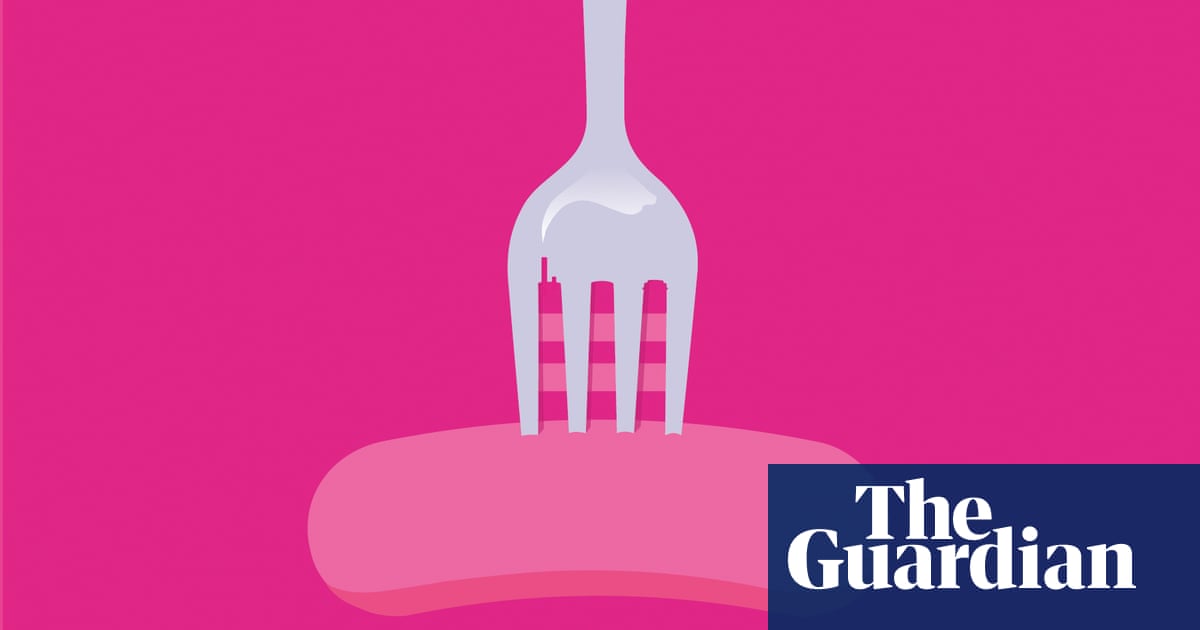
Strange as it may seem, food has replaced tobacco as the leading cause of early death globally. Each year, more people die in America from illnesses caused by poor diet than were killed fighting in every war in US history combined. In the UK the situation is equally dire.
Officially, the health effects of food are entirely due to its nutritional content – the amount of fat, salt, sugar and fibre it contains. The current system leaves it up to you to read the detailed information on the pack and decide how much to eat based on recommended values, and if you have children you’ll need to know the values for them too. This is nigh-on impossible for most people – but even if you were able to calculate exactly how much fat, salt and sugar you were consuming in each mouthful, you would still be neglecting one vital determinant of health – how the food was processed.
You might feel like you’ve heard all this before. People have expressed concern about “processed food” for a long time, but it’s not always been an easy concept to pin down. After all, we have been processing food for hundreds of thousands of years. The human diet was invented by primarily female domestic scientists who modified plants and animals by milling, shaking, pounding and grinding them, or altering them via fermentation and heat, before salting, smoking and drying them for preservation. Food processing has shaped almost every aspect of our bodies: we have the shortest guts of any animal our size because part of their job is outsourced to our kitchens. We are the only animal that must process its food to survive. Processing is fine.
But just over a decade ago a team of scientists in Brazil noticed a paradox in the data from their national nutrition surveys. Obesity had gone from being rare, to being the country’s dominant public health problem – even though people were buying less oil and sugar. What they were eating more of was industrially processed food: biscuits, emulsified breads, confectionary and so on. The team developed a definition that distinguished between traditional food, whole or processed, and these items, which they termed ultra processed foods, or UPFs for short.
The full definition is pages long because it needs to encompass so many different products. But if you’re trying to work out if something is a UPF, a good rule of thumb is that it’ll be wrapped in plastic and contain an ingredient you don’t find in a domestic kitchen.
The Brazilian team’s work meant that the hypothesis – that UPFs were themselves the cause of health problems – could be tested. There are now hundreds of robust scientific studies which show that higher UPF intake is associated with weight gain, stroke, heart attack, cancer, type 2 diabetes, high blood pressure, fatty liver disease, inflammatory bowel disease, depression, dementia and early death.
In the UK we get around 60% of our calories from UPFs, and that figure is even higher for young people. At this point, it is our national food culture, and the material we build our children’s bodies from. Much of it is familiar as “junk food”, but our traditional idea of what constitutes that – chips, crisps, fizzy drinks – needs adjusting. It should include all supermarket bread; likewise breakfast cereal; packaged snacks, reconstituted meat products and frozen meals. And beware: lots of UPFs are being marketed as healthy, nutritious or useful for weight loss.
The evidence now shows that UPFs are harmful not simply because they are salty, fatty, sugary and low in fibre; the processing itself is at fault. Read the ingredients list and you’ll see that most UPFs are made from commodity crops such as corn or soy deconstructed into their most basic molecules (protein isolates, refined oils and modified carbohydrates). These are then reassembled with additives to produce food in any shape or texture desired.
This manipulation of texture is a big part of the problem. UPFs are often very soft and very dry. The illusions of moisture is created with gums and oils, but the water content is low in order to improve shelf life. As a result these foods are extremely energy dense. High energy density combined with softness means you eat quickly, and bodily systems evolved over millions of years to tell you when you’re full can’t keep up.
There is a very long list of other possible explanations for the damage UPFs cause. For example, fruits and vegetables are complex, containing tens of thousands of phytochemicals – molecules which are essential for dietary health. UPFs have dramatically reduced levels of these. And many of the additives used (such as emulsifiers, flavour enhancers and sweeteners) have direct undesirable effects on our metabolic health and our microbiomes.
All this is scientifically fascinating, but trying to dissect exactly how UPFs harm us, though important, may be less useful from a public health perspective than taking a step back and asking why we have them in the first place. The culinary scientists of pre-history invented food for the nourishment of their families and communities. Ultra-processed food is part of a financialised food system whose purpose is profit. For example, it incentivises squeezing every last sellable ingredient out of things that aren’t even grown for human consumption: soy protein isolate, corn syrup and modified starches all come from crops farmed at vast scale to feed animals. Products go through cycles of development and marketing over many decades, incorporating more and more processes and ingredients, all with the aim of making it hard to stop eating them. The evidence shows that for many people, myself included, some UPFs are as addictive as cigarettes and other drugs of abuse.
It’s not surprising that food developed by transnational corporations motivated by shareholder value affects our physiology differently from food cooked by someone who loves us, but it’s taken us a long time to be certain of it; among independent scientists at leading institutions like UCL, where I work, there is a growing consensus that ultra-processing is a significant driver of the poor health that causes so much suffering in this country.
So, what should we do? We need to put a warning about ultra processed food in our national nutrition guidance, the NHS Eatwell Guide, alongside those that mention salt, fat and sugar. This seems like a small step but it’s vital. From there we must tread carefully. For many people UPFs are the only affordable food available, and policy changes should avoid further stigmatising the disadvantaged groups most vulnerable to their effects. One win-win measure would be to limit the marketing of these products, especially to children. And we should make sure everything served in institutions like schools, hospitals and prisons is real food. Eventually we’ll need to recognise, as with tobacco products, that warning labels are necessary. And there are broader lessons here too: we know that when people can afford to eat more healthily, they do. Reducing the weight gain, diabetes and heart attacks caused by UPFs means reducing the poverty and inequality that make them the only option for so many.
Ultra-Processed People by Chris van Tulleken is published by Cornerstone.
Further reading
Ravenous by Henry Dimbleby, Profile (£16.99)
Food for Life by Tim Spector, Jonathan Cape (£20)
Gut by Giulia Enders, Scribe (£12.99)












